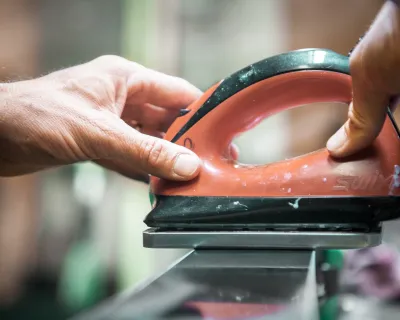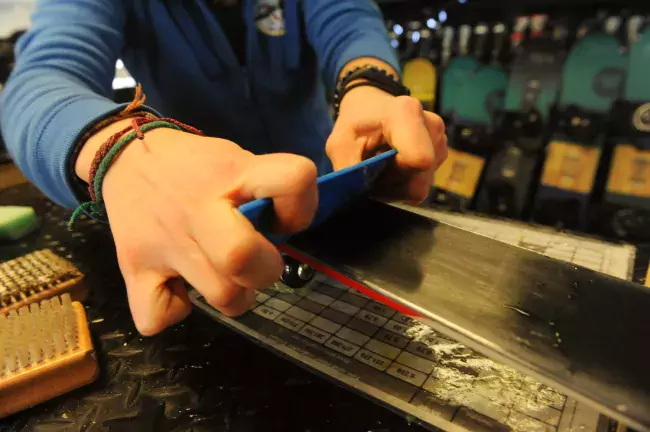
Tune your skis and snowboards (now!) for a better ride
Ski and snowboard tuning is one of those things that is easy to ignore, until it isn’t. So real talk, friends: when was the last time you tuned your skis?
Did you get a summer tune before storing your skis away at the end of last season? If so you’re in fine shape. For the rest, if you’re asking “what’s a summer tune” or you’re sheepishly answering no, or if you’re toying with diving into the world of DIY ski maintenance, read on. Now is the time to get tuned and ready.
Here are a few answers to the common questions about ski tuning, dos and don’ts, and tips to keep you ripping through the season.
How often should you tune your skis
Ballpark, it’s probably a good idea to get your skis or snowboard tuned every 5 - 7 times out, depending on how often and where you ride. How aggressively you ski and what the conditions are like will play a major factor in how often you need to tune your gear.
Signs your skis need tuning
- white streaks or blotches on your bases
- having trouble edging or gliding
- burrs or rust spots on your edges
- deep scratches or gouges in your bases, aka core shots
As someone who does some DIY ski tuning, I’ve taken to tuning more frequently to keep the edges fine and bases from drying out (yes, your bases need to be “hydrated”). It means less work, but more often.
score better snow days with SnowSeekers
sign up for the FREE newsletter that gets you into the snow
PRO TIP: before you store your skis at the end of each season, make sure you give your skis a summer coat of wax—a thick layer you don’t scrape—to help protect them until fall, AKA a "summer tune." Then it’s simply scrape and ski away come winter.
Should you DIY tune or get a shop tune?
Even though I know the shops have expensive technical equipment that far outstrips my abilities, I find a certain Zen in tuning skis. And by tuning my own edges and waxing, I can put off the visit to the doctor for maybe 10 - 15 days (about half a season given how often I’m skiing) but eventually I need to tap out.
One thing ski shops can do that is near impossible for the DIYer is the base grind, on computerized machines that can grind your edges consistently within fractions of a millimetre.
So while you can get away with it for a bit, eventually a shop tune can be a great thing. Like clipping your own toenails versus a pedicure.
DIY ski tuning
For those looking to jump into the art of DIY ski tuning, here are a few answers to commonly asked questions.
I want to tune my own skis. How do I get started?
We have a story on how to wax your skis or board, including video tutorials. You may also want to look into ski tuning clinics in your area. Local ski shops will often host these in the fall.
What tools do I need to tune my skis?
To get started, here are the basics:
- a workbench with clamps (you can buy specially made ski tune benches)
- a file/edge tuner system
- a hot iron/ski waxing iron and wax
- additional buffer tools (gummy stone, diamond stone, brushes and cloths)
Suffice to say, if you’re going to make the investment, you’ll want to make this more than a one-time thing. Once you get into it, like many hobbies or activities, you’ll find there’s always one more thing you need.
What about quick tunes on the go? Is liquid wax effective? What about a hand edge tuner?
For long road trips or when you’re in need of a quick solution, liquid wax and portable hand edgers will cover you in a pinch.
If you routinely go on long ski road trips you may even want to put together a little kit for on-the-go tunes for times when you just can't wait to do a full tune. But don’t rely on them as go-tos.
For those who are diving into the world of ski tuning, I salute you. For me it’s been a process of trial and error, learning as I go, and the results have not always been perfect (like the time I absent-mindedly left some extra wax on the edges of my skis on an icy day).
But it can also bring you hours of Zen-like labour, the satisfaction of a craftsman honing a skill and a job well done. Plus there’s the added pleasure of knowing that soon you’re going to be out reaping the rewards of your labours until the time comes to do it all again.
















